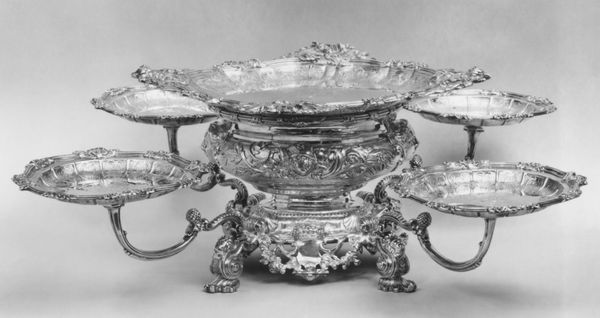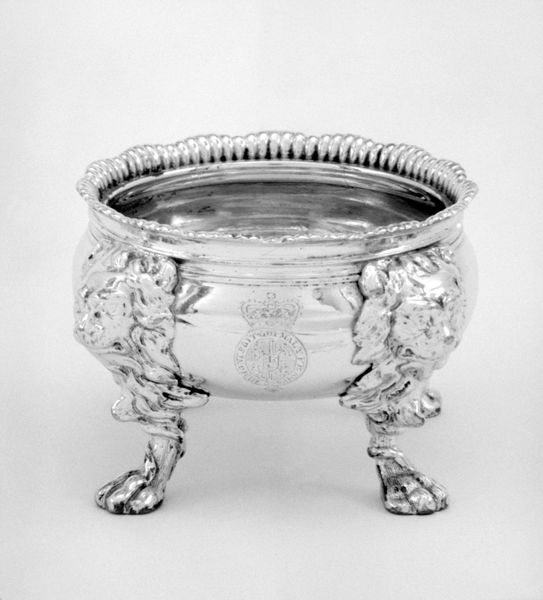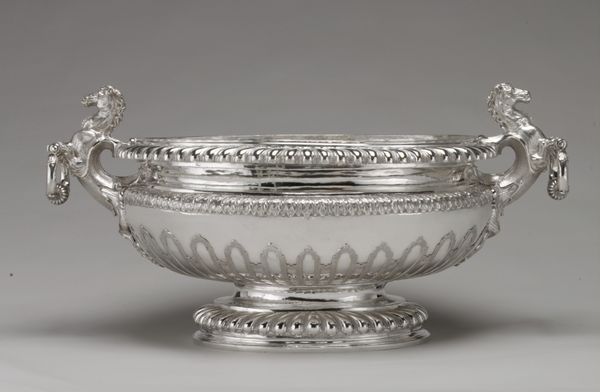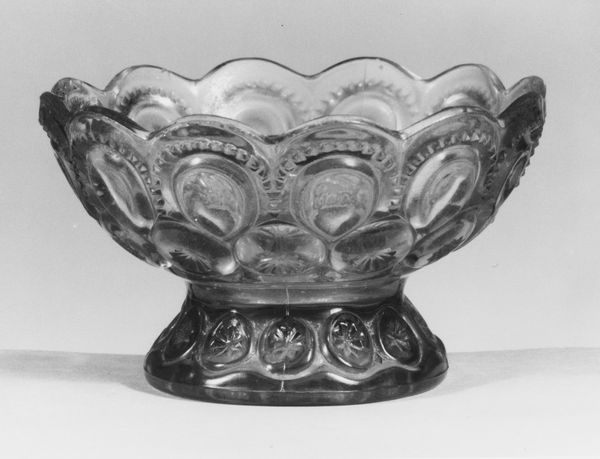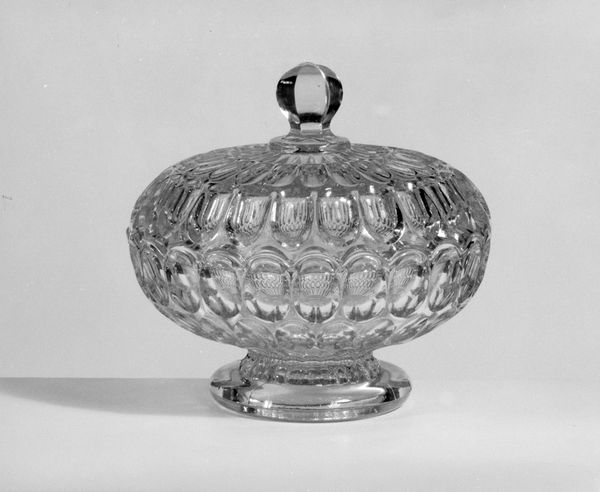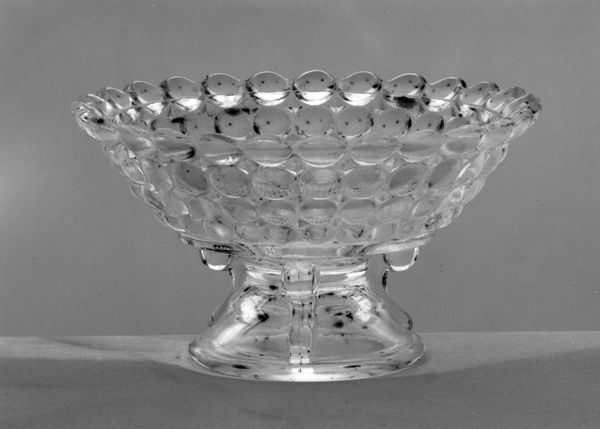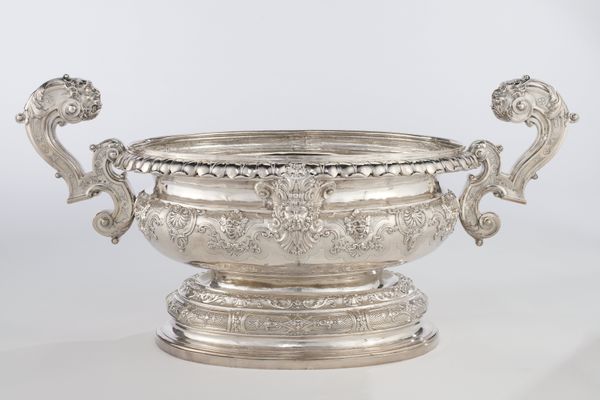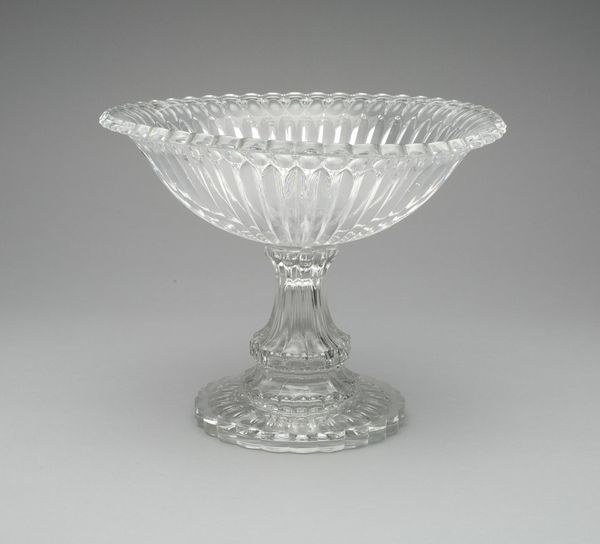
Centerpiece with cover and eight accessory dishes 1733 - 1734
0:00
0:00
silver, sculpture
#
silver
#
baroque
#
sculpture
#
men
#
decorative-art
Dimensions: Overall (centerpiece with cover (a, b)): 8 3/8 × 13 1/4 × 11 5/8 in. (21.3 × 33.7 × 29.5 cm); Overall (round dishes (c–f)): 1 3/4 × 6 7/8 in. (4.4 × 17.5 cm); Overall (oval dishes (g, j)): 1 1/2 × 8 3/4 × 6 7/16 in. (3.8 × 22.2 × 16.4 cm)
Copyright: Public Domain
Editor: This gorgeous silver centerpiece with its eight accessory dishes was created between 1733 and 1734 by Paul de Lamerie. It has an undeniable sense of opulent drama. What symbols stand out to you, especially within its Baroque style? Curator: I’m immediately drawn to the lions – note how they form the feet of the centerpiece. The lion, often associated with strength, courage, and royalty, has a very long lineage in heraldry and symbolism, spanning cultures and epochs. Their inclusion here, combined with the other classical figures depicted, suggests a deliberate effort to evoke a sense of historical continuity and prestige. What story might de Lamerie be trying to tell through these images? Editor: Perhaps he’s referencing the lineage of the patron, celebrating power and their connection to historical figures. The arrangement, though…does the symmetry reflect a specific intention or representational approach? Curator: Symmetry, especially in decorative arts of this period, speaks to harmony and order, values often prized by the elite. But look closely – is it *perfectly* symmetrical? Or do the subtle variations contribute to a more dynamic sense of life, hinting at the tensions beneath the surface of apparent stability? Editor: I see what you mean; those minute differences create visual interest but also suggest the inherent imperfections within even the most seemingly flawless constructions. Curator: Exactly. The masks of faces – grotesque yet refined – these are motifs intended to both protect and intimidate, to remind of the ever-present specter of mortality, which the commissioner attempts to conquer via the commission of art. What does that suggest about the cultural anxieties of the time? Editor: That’s a fantastic point. This object is speaking on many levels; it becomes less about a bowl and more a complex assertion of social status and cultural values, immortalized in silver! Curator: Precisely. The object then becomes a mirror, reflecting the commissioners' ambitions, fears, and worldview for future generations. And in turn, reflects the continuity of power itself.
Comments
No comments
Be the first to comment and join the conversation on the ultimate creative platform.
